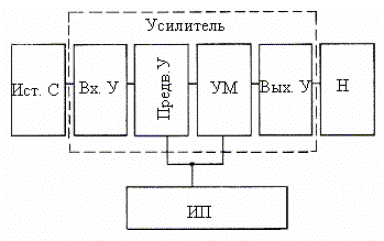
Amplifier Measurements and What It Means - Part II
In this second edition of Audio Lab's comparison of different types of amplifiers, we present two multi-channel home theater products? Yamaha RX-V5.1 473 amplifier (five power amplifiers on board), price PLN 1600, and 7.1 format amplifier (seven power amplifiers on board) Yamaha RX-A1020 (price PLN 4900). Is the price difference just because of the addition of the next two tips? theoretically, these are devices of a completely different class. But will such an assumption be confirmed by their parameters?
AV receivers are nearly all solid-state devices, sometimes ICs, sometimes pinned, operating in class D, although most commonly in the traditional class AB.
The Yamaha RX-V473 costs PLN 1600, which is more than the Pioneer A-20 stereo system introduced a month ago. More expensive and better? Such a conclusion would be premature, not only because of the surprises that await us in the world of audio devices; examining the case in more detail, there is not even a rational basis for such expectations! A multi-channel AV receiver, even an inexpensive one, is by definition much more complex, advanced, and performs many more functions. It contains more circuits, including digital, audio and video processors, and has not two power amplifiers, like a stereo amplifier, but at least five (more expensive models have seven, or even more ...). It follows that this budget should have been enough for a much larger number of systems and components, so each of the five PLN 1600 AV receiver power amplifiers does not have to be better than one of the two, much simpler PLN 1150 stereo amplifiers. (following the prices from our examples).
The measured power ratings this time refer to slightly different conditions than those presented in the stereo amplifier measurement. First, with most AV receivers, in theory, we can only connect speakers with an impedance of 8 ohms. Is this a separate issue again? What for? Most speakers today are 4 ohms (although in many cases they are listed as 8 ohms in the company's catalogs...) and connecting them to such an AV receiver usually does not cause very bad results, but it is not officially ?permitted? because it heats up the device in excess of the limit allowed by EU standards; So there is an unspoken agreement that receiver manufacturers write their own, and loudspeaker manufacturers write their own (4 ohms, but sell as 8 ohms), and ignorant buyers stick them in ... and the cabinet plays. Although sometimes it gets a little warm, and sometimes it turns off (protection circuits do not allow damage to the terminals by too much current flowing through them). However, following the manufacturer's recommendations, we at the Audio Lab do not measure the power of such receivers into a 4-ohm load, but only into an officially authorized, 8-ohm load. However, it is almost certain that this time the power at 4 ohms would not increase as significantly or even completely, as in the case of the "normal". stereo amplifier, as the design of the receiver's power amplifiers is optimized to deliver full power even into 8 ohms. How to explain the fact that a 4 ohm connection, although it does not increase power, does increase temperature? Very simple? it is enough to turn to school physics textbooks and check the power formulas ... With a lower impedance, the same power is obtained with a lower voltage and a higher current, and the current flowing through them determines the heating of the amplifier circuits.
You will find the continuation of this article in the January issue of the magazine
Stereo receiver Yamaha RX-A1020
Stereo receiver Yamaha RX-V473
